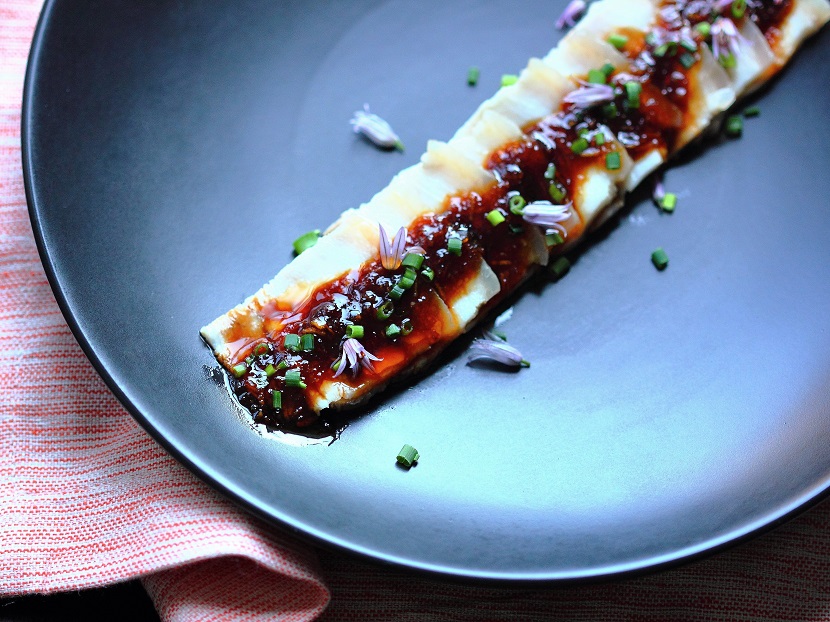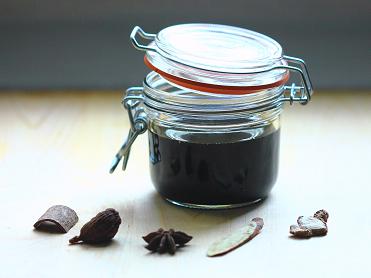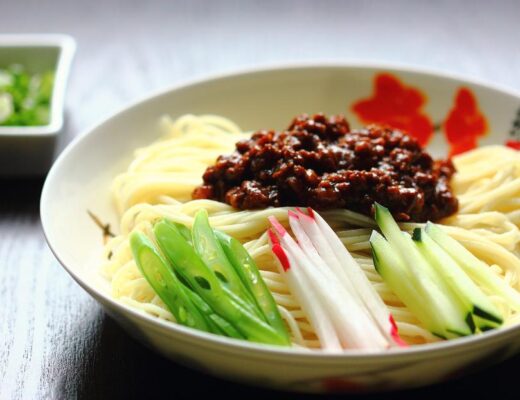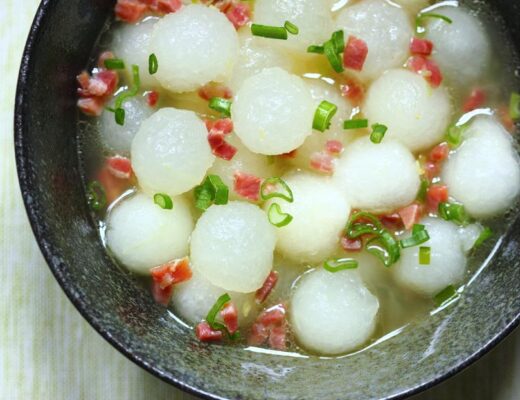Last Updated on July 8, 2023 by Simon Fan
A great way to enjoy meat in the summer is to prepare and serve it “white-cut”, a cooking method used all across China. The meat is poached in a simple clear broth until just cooked through, and then sliced and served with a dipping sauce. While pork is mostly used for this preparation, beef and lamb work equally well.
Among the regional variations of white-cut pork, my favorite one comes from Sichuan.
Known for creating bold and complex flavors for their food, the Sichuanese serve their pork with minced garlic mixed with enriched soy sauce, called fu zhi jiang you (复制酱油) in Mandarin. It’s made by simmering soy sauce with brown sugar and spices, creating a sauce with irresistible aromas and balanced savory, salty, and sweet flavors.
You can easily make fu zhi jiang you at home by following the recipe below. To flavor the soy sauce, I use the following spices (from left to right in the picture): cassia bark, black cardamom, star anise, licorice, and sand ginger (sha jiang 沙姜 in Mandarin). Feel free to make your spice combination based on what’s available to you. Clove, fennel seed, Sichuan peppercorn, and ginger are good choices as well. You can use this versatile sauce to add oomph to meat, poultry, vegetables, as well as rice and noodle dishes.
The preferred cut of pork for this dish is either rump or belly with skin attached. When you cut the cooked pork into thin slices through the skin, fat, and meat, each slice will offer a full spectrum of flavors and textures. Of course, you can use leaner or skinless cut such as tenderloin if you like.
White-cut technique can be applied to poultry as well. A great example is White-cut chicken, which is served with an aromatic ginger-scallion sauce.
Sichuan white-cut pork with garlic sauce (四川蒜泥白肉)
Serves 2
Ingredients
12 oz (340 g) skin-on pork rump or belly
2 scallions, cut in half crosswise
1-inch (2.5 cm) piece of ginger, sliced
2 tablespoons Shaoxing wine
Enriched soy sauce
1 bottle (17 fl. oz/500 ml) naturally brewed soy sauce
7 oz (200 g) brown sugar
1 g star anise
1 g cassia bark
1 g sand ginger
1 g black cardamom
1 g licorice
3 garlic cloves, minced
1 teaspoon chili oil
1 teaspoon sesame oil
1 small bunch of chives or 1 scallion, thinly sliced
Chive blossoms, for garnish (optional)
Directions
- Place the pork, scallions, ginger, and wine in a pot and add enough water to cover. Bring to a gentle boil, then reduce the heat to a bare simmer, with only occasional bubbles breaking the surface. Poach until the pork is just cooked through (its juice runs clear when inserted with a thin knife), about 15 minutes. Turn off the heat and leave the pork in the poaching liquid for about 20 minutes.
- Transfer the pork to a plate, cover, and let it cool.
- When the pork is cool enough to handle, cut crosswise into thin slices about 3 x 2 inches (7.5 x 5 cm) and no thicker than ⅛ inch (3 mm).
- To make the enriched soy sauce, add all the ingredients for the sauce to a saucepan. Bring to a boil, then reduce to a bare simmer. Cook until the sauced has reduced by a third, about 30 minutes. Let it cool, then strain into a container with a lid.
- To serve the pork, arrange the pork slices on a plate. In a bowl, mix the garlic with 2 tablespoons of the enriched soy sauce, chili oil, and sesame oil. Pour the mixture evenly over the pork, and garnish with the chives and chive blossoms. Enjoy!




